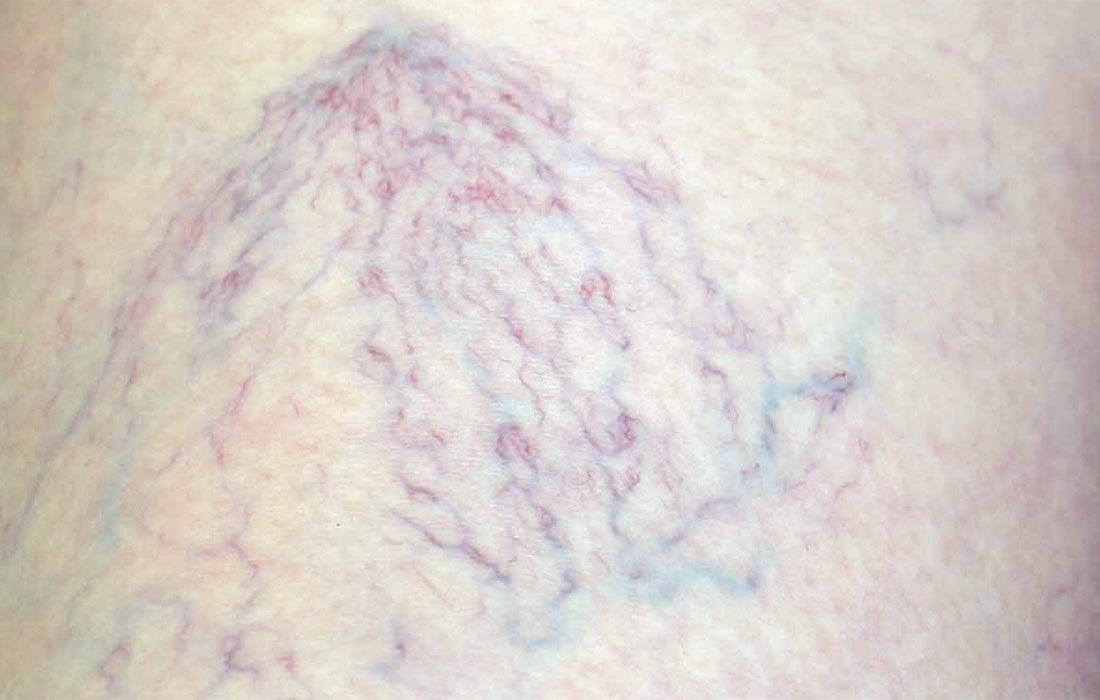About Sclerotherapy
Sclerotherapy is the injection of a sclerosing liquid into the vein, that causes the vein walls to become "sticky". The vein walls will stick together, blood will stop flowing through the treated vein, a thin fibrous cord is formed and your body will naturally absorb the vein. Sclerotherapy is one of the oldest methods of treating varicose and spiderveins. Modern sclerotherapy is well suited to treat spider veins and small reticular veins below the level of your heart. Treating larger varicose veins requires the sclerosant to be delivered by catheter under ultrasound guidance and remains less effective than vein ablation procedures These larger varicose veins are best treated by endovenous radio frequency ablation. Surface Laser treatment of spider veins often fails in the lower leg and ankle area, these patients are well suited to sclerotherapy, and usually have excellent results. Sclerotherapy is an office based procedure and takes 10-30 minutes to complete. You need to wear a compression bandage or stocking afterwards for a few days.
Cosmetic Sclerotherapy
What to expect during a sclerotherapy session?
Sclerotherapy or spider vein treatment is an office based procedure and takes 10 - 30 minutes to complete. While lying on an examination table, the treatment area of your legs will be cleansed with an antiseptic solution. The needles that are used for reticular and spider vein removal are very small, infact the smallest availible needle. A special skin illuminating device is used to iluminate the skin from beneath, allowing the sclerotherapist to locate even the tiniest veins as well as hard-to-find deeper reticular veins that serve as feeder veins for superficial thread or spider veins. The technique is known as transilluminated Sclerotherapy because the device transilluminates the skin making it translucent. The effective treatment of feeder veins is important for complete eradication of your spider veins. It is these feeder veins that are not treated by surface lasers, leading to undesired results. Bring short pants to wear during your treatment and loose fitting long pants or a skirt for afterwards.
Preparation and Recovery after sclerotherapy?
In the week before sclerotherapy, avoid taking medication that will "thin" your blood, like anti-inflammatories, arnica, aspirin. Avoid all tanning. Shaving or waxing your legs is a good idea, but do it at least a day or two in advance. On the day of your appointment, bring short pants to wear during treatment and long loose fitting clothing for after treatment. Afterwards avoid heavy lifting, strenuous exercise and hot baths for 2 days. Daily walking is very good and you are encouraged to walk at least 45 minutes every day for a couple of weeks. Compression therapy in the form of class 2 stockings will be provided afterwards and will improve results.
Foam sclerotherapy vs cosmetic sclerotherapy
Foam sclerotherapy is a mix of the sclerosant chemical and air, to produce a foam, that is injected. This is suitable for the treatment of buldging varicose veins or large veins.
Cosmetic sclerotherapy is a liquid based sclerosant solution that is injected into fine reticular and spider veins.
Who are good candidates for sclerotherapy?
Men and Woman of all ages who are suffering from unsightly spider veins and reticular veins(slightly larger blue veins) are good candidates for sclerotherapy. If you are pregnant or breastfeeding, it is advisable to postpone your sclerotherapy, as safety is not established. Read more on varicose vein management during pregnancy Many pregnant women experience dramatic and spontaneous improvement in the months following delivery, making their treatment simpler, and sometimes unnecessary. Patients who have an allergy to the sclerosant or who have a deep vein thrombosis (DVT) are not suitable candidates. Evidence from recent medical trials supports the current place of sclerotherapy in modern clinical practice, which is usually limited to treatment of recurrent varicose veins following surgery and thread veins (feeder veins to spider veins) Dr. Blignaut will examine your legs, review your medical history and the severity of your condition to determine the best spider vein treatment procedure or combination of treatments
What are the risks and is it safe?
In expert hands, sclerotherapy is very safe. Serious side effects like DVT, allergic reactions and skin ulceration are rare. More common side effects of sclerotherapy are mild and temporary, these include:
- Swelling, redness, tenderness and itching
- Minor bruising, retained dark blood in treated veins
- Brown pigmentation and matting
Sclerotherapy cost and pricing
Pricing details for 2025. Please call us to confirm.
- Cosmetic Micro Sclerotherapy - R2300 per 30 min session
Foam Sclerotherapy is performed by Dr Blignaut - pricing available on request.
Cosmetic Sclerotherapy for spider veins is not covered by medical schemes in South Africa.

